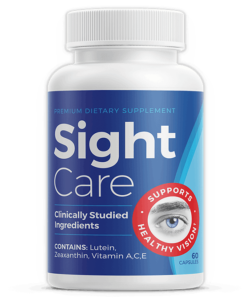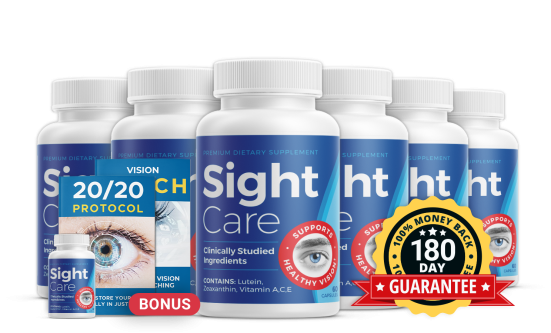What Is Sight Care?
Sight care refers to the practices, treatments, and preventive measures aimed at maintaining and improving eye health and vision quality. It encompasses a broad range of activities and medical interventions designed to protect the eyes from injury, diseases, and the effects of aging or environmental factors. Here’s a breakdown of the key components of sight care.

1. Regular Eye Examinations
Regular check-ups with an optometrist or ophthalmologist are crucial. These exams help in the early detection and treatment of eye conditions like glaucoma, cataracts, and macular degeneration before they progress to serious levels.
[Offical Website – Click to Buy Sight Care]
2. Protective Measures
This includes wearing sunglasses to protect eyes from harmful UV rays, using protective eyewear during activities that could potentially harm the eyes (such as sports or working with hazardous materials), and ensuring proper lighting to avoid strain.
3. Proper Nutrition
A diet rich in vitamins and minerals is essential for eye health. Nutrients like omega-3 fatty acids, lutein, zeaxanthin, vitamins C and E, and zinc have been shown to support eye health and reduce the risk of certain eye conditions.
4. Managing Screen Time
With the increasing use of digital devices, managing screen time and practicing good habits to prevent digital eye strain is a part of modern sight care. This can include taking regular breaks using the 20-20-20 rule, ensuring proper lighting and screen distance, and using blue light filters.
5. Eye Hygiene
Maintaining good eye hygiene, such as avoiding touching or rubbing the eyes with unclean hands, properly cleaning contact lenses, and treating conditions like dry eyes, is essential to prevent infections and other eye health issues.
6. Treatment of Eye Conditions
For those with existing eye conditions, following prescribed treatments and interventions is a crucial part of sight care. This may involve medications, surgeries, or the use of corrective lenses.
7. Lifestyle Modifications
Certain lifestyle choices, such as quitting smoking and controlling other health conditions like diabetes and high blood pressure, can significantly impact eye health.
Sight care is an integral part of overall health care, aiming to ensure that individuals maintain their vision and quality of life. By adopting comprehensive sight care practices, individuals can greatly reduce their risk of vision loss and eye diseases, ensuring their eyes remain healthy for as long as possible.
The Importance of Sight Care
Vision is among the most valued senses, offering us the ability to perceive and interact with our surroundings. It’s not just about seeing; it’s about understanding and navigating the world. Neglecting eye health can lead to a range of problems, from temporary discomfort to severe conditions that can impact daily life. Therefore, understanding the importance of sight care is the first step toward healthy vision.
Understanding Vision Threats
Several factors pose threats to our eyesight, including prolonged exposure to screens, UV light, poor nutrition, and lack of regular eye check-ups. Conditions like digital eye strain, cataracts, macular degeneration, and glaucoma are prevalent, emphasizing the need for proactive sight care. Recognizing these threats helps in adopting preventive measures.
Digital Eye Strain: The Modern Epidemic
With the increase in screen time, digital eye strain has emerged as a common issue. Symptoms include dry eyes, irritation, blurred vision, and headaches. To combat this, adopt the 20-20-20 rule: every 20 minutes, look at something 20 feet away for at least 20 seconds. Adjusting screen brightness, using anti-glare screens, and ensuring proper lighting can also alleviate strain.
UV Protection: Shielding Your Eyes
Exposure to ultraviolet (UV) light is a risk factor for conditions like cataracts and macular degeneration. Wearing sunglasses with 100% UVA and UVB protection is a simple yet effective way to protect your eyes from harmful rays. Consider wrap-around glasses or wide-brimmed hats for additional protection.
[Offical Website – Click to Buy Sight Care]
Nutrition and Eye Health
Diet plays a pivotal role in maintaining eye health. Nutrients like omega-3 fatty acids, lutein, zeaxanthin, vitamins C and E, and zinc support vision and reduce the risk of age-related eye conditions. Incorporating a variety of fruits, vegetables, nuts, and fish into your diet can provide these essential nutrients.
Regular Eye Examinations
Many eye diseases develop silently, without obvious symptoms in their early stages. Regular eye exams are vital for early detection and treatment, potentially preventing severe vision loss. Experts recommend a comprehensive eye exam every one to two years, depending on your age, risk factors, and whether you already wear glasses or contact lenses.
Enhancing Your Visual Environment
Creating an eye-friendly environment involves adjusting lighting, reducing glare, and ensuring that your work and living spaces are conducive to good eye health. For instance, position your computer monitor so windows are to the side, instead of in front or behind it, to minimize glare.
Eye Exercises: Myth or Reality?
While eye exercises can’t cure nearsightedness or presbyopia, they can help manage eye strain. Simple exercises, like focusing on distant objects periodically or practicing eye movements, can provide relief and support eye health.
The Role of Technology in Sight Care
Advancements in technology offer new avenues for protecting and enhancing vision. Blue light filters for screens, specialized eyewear, and apps designed to remind users to take eye breaks are examples of how technology can support eye health.
Coping with Common Eye Conditions
Understanding and managing common eye conditions is a crucial aspect of sight care. Whether it’s dealing with dry eyes through artificial tears and humidifiers or managing more serious conditions under medical supervision, knowing how to respond to eye health challenges is essential.
The Future of Sight Care
The future of sight care is promising, with ongoing research and advancements in treatments and preventive measures. From gene therapy for inherited eye diseases to innovative surgical techniques for cataracts, the horizon is bright for those looking to protect their vision.
Conclusion
Sight care is an integral part of overall health and well-being. By understanding the risks, adopting protective measures, and seeking regular professional care, individuals can significantly contribute to the longevity and quality of their vision. In a world where visual information is paramount, taking care of our eyes is not just a health measure—it’s a way to ensure a vibrant and colorful life. Remember, it’s not just about seeing well today; it’s about preserving your vision for all your tomorrows.
